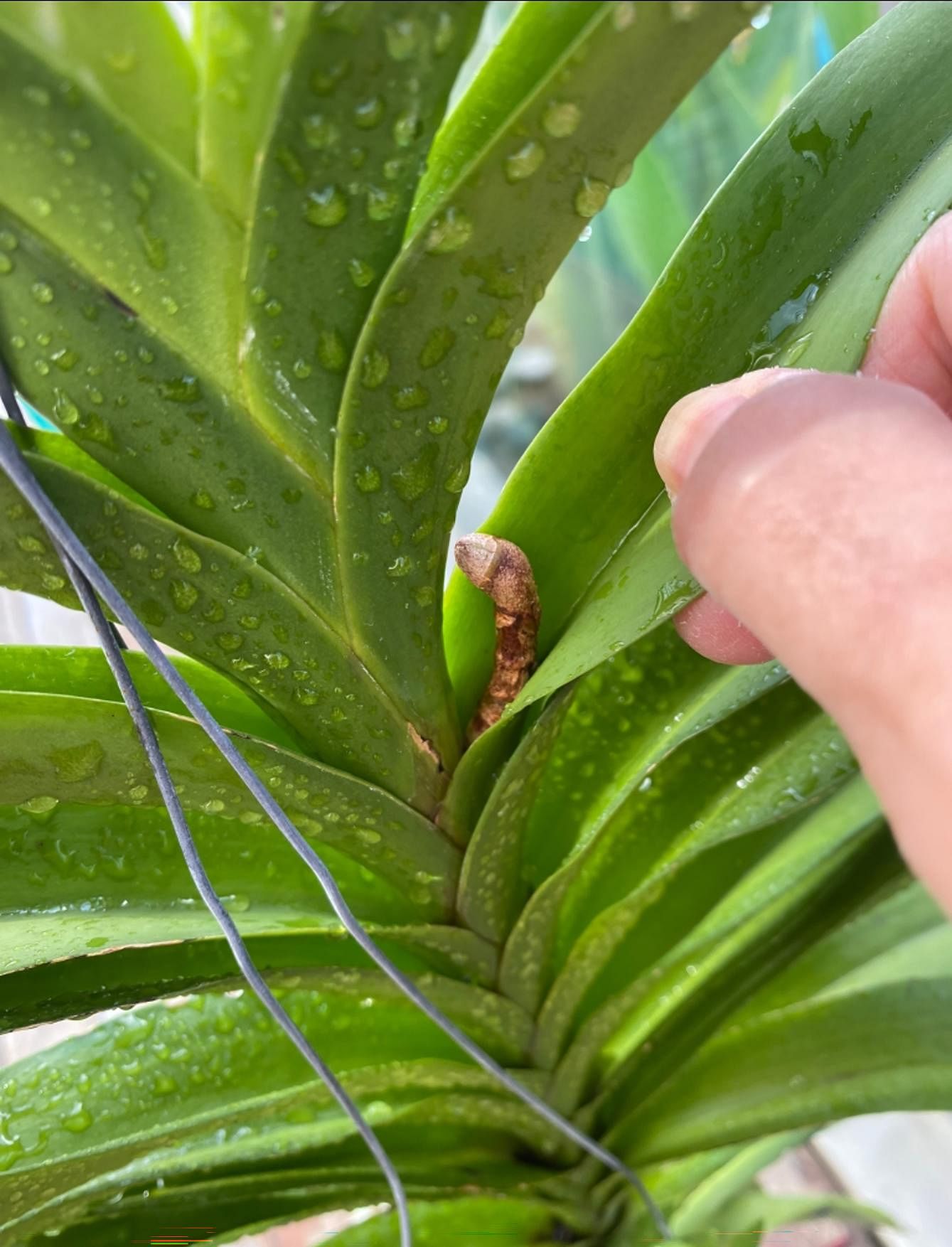Divide banana sucker when it is about half the size of the mother plant
I placed a banana plant in a pot and it started to fruit after six months. At what stage can I plant the suckers? Also, what is the expected productive life cycle for banana plants?
Adrian Ling
The banana sucker is still too small to be grown separately. It is best to wait for it to grow larger – roughly half the size of the mother plant – before it can be divided and potted separately.
Ensure your plant is grown in a large pot to accommodate its root growth, and that its water and nutrient needs are met. Excessively pot-bound banana plants can be unproductive and produce only small fruit.
Lack of development in Vanda inflorescence could be due to stress

The new shoots of my Vanda orchid have turned brown in the last few months. This orchid is healthy and gets filtered sunlight, and is fertilised weekly. Why do the shoots turn brown and have their growth aborted?
Joyce Han
The lack of development in the inflorescence of the orchid could be due to several reasons.
Ensure that your plant is well-watered, especially during hot and dry weather. Excessive drying out can stress the plant and cause it to abort any flowers.
Also, avoid spraying fertilisers or pesticides directly onto the developing portion as the chemicals can burn and injure it.
Control caterpillar infestations on cycad plant

My cycad plant has been with me for nearly 35 years. Since I transplanted it some 12 years ago outside my house, it has been weak and has not grown well. I try to fertilise it regularly. How can I nurse the plant back to health?
David Ho
The cycad plant needs to be grown in a relatively sunny spot for best results.
Also, this species of cycad, the Cycas revoluta, is highly susceptible to attacks by caterpillars of the cycad blue butterfly. The caterpillars consume young, emerging fronds of the plant whenever they are produced.
If this is not controlled, after several rounds of leaf production, the plant will be weakened and can die.
Protect young, developing fronds with applications of a pesticide such as Dipel or Abamectin, which are available in local nurseries.
Also, check if there is scale infestation on the plant as these sap-sucking insects can weaken it. Apply summer oil on all parts of the plant if there are such pests. Repeated applications are required to keep the pest population low.
You should also fork the soil around the plant to reduce the adverse effects of soil compaction. Apply a layer of mulch consisting of good-quality compost to improve the soil structure, and feed your plant with fertiliser to increase vigour.
Powder-Puff Tree is a native species in Singapore

There are several of these trees along the road outside my home. What are their names and are the fruit edible?
Carol Low
The tree is botanically known as Barringtonia racemosa, and its common names include Powder-Puff Tree and Small-Leaved Barringtonia. It is native to Singapore and is commonly grown in the country’s parks and gardens.
The bark and fruit are often crushed and used as fish poison, as they contain toxic saponins.
Agave lacks light and is attacked by scale insects

I have had this aloe plant for years. The leaves are covered with brown patches and eventually become limp. What are these patches and how do I treat the leaves?
Sindy Ang
The plant appears to be a species of Agave. The long, floppy leaves are a sign that it is not getting sufficient sunlight.
This plant grows best outdoors in an exposed spot where it can get full sun. You will need to position the plant as such.
As for the brown patches, they could be scale insects, which is a type of sap-sucking pest. You can remove them by using a softbrush, followed by an application of summer oil that suffocates the pests.
This low-toxicity pesticide is available for sale in local nurseries. It is important to ensure complete pesticide coverage with repeated applications to reduce the pest populations.
You can also apply some systemic pesticide granules of dinotefuran around the root zone. The plant uptakes the pesticide into the sap, and pests are killed when they consume the pesticide-laced sap.
- Answers by Dr Wilson Wong, an NParks-certified practising horticulturist, parks manager and ISA-certified arborist. He is the founder of Green Culture Singapore and an adjunct assistant professor (Food Science & Technology) at the National University of Singapore.
- Have a gardening query? E-mail it with clear, high-resolution pictures of at least 1MB, if any, and your full name to stlife@sph.com.sg. We reserve the right to edit and reject questions.

